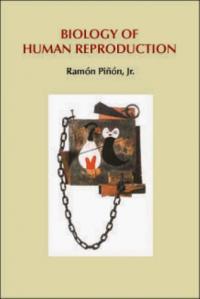Biology of Human Reproduction
Biology of Human Reproduction
By: Ramón Piñón
Ramón Piñón's textbook is the most up-to-date and useful introduction to human reproductive biology available. This book, developed from the author's course notes at UC San Diego, is designed as an introductory text for non-science majors.
For all sales outside of the United States, please contact Felicity Henson, fhenson@aip.org
Title information
By capturing the latest developments in this dynamic field–including cloning, embryonic stem cells, and assisted reproduction–Ramón Piñón has made sure that his textbook is the most up-to-date and useful introduction to human reproductive biology available. This book, developed from the author’s course notes at UC San Diego, is designed as an introductory text for non-science majors. Although its emphasis is on biology, it combines a rich assortment of comparative historical and literary notes with a contemporary inquiry into human sexuality. It may also serve as an intermediate-level text for non-science majors, or an introductory text for students of biology.
1. The Study of Human Reproduction
2. Sex, Reproduction, and Mutation
3. Reproductive Hormones
4. Sex Determination and Fetal Sexual Differentiation
5. The Ovary: The Ovulatory and Menstrual Cycles
6. The Testis and Testicular Function
7. The Brain and Reproduction
8. Puberty
9. Stress and Reproduction
10. Aging and Reproduction
11. Fertilization and Implantation
12. Placentation, Parturition, and Lactation
13. Fetal Loss and Birth Defects
14. Disorders of Sexual Development
15. Artificial Control of Fertility
16. Infertility and Assisted Reproduction
17. Sexually Transmitted Diseases
18. Cancers of the Reproductive Tissues
19. The Biology of Human Sexuality
20. Human Embryo Research
List of Abbreviations
Glossary
Index
|
“Well written and very readable.” “Pinon has a deeper, wider, richer approach than the competing textbooks.” “Its comprehensive coverage of the topics includes up-to-the-minute science and historical perspectives, all written at a level that is appropriate for the nonscientist.” |

